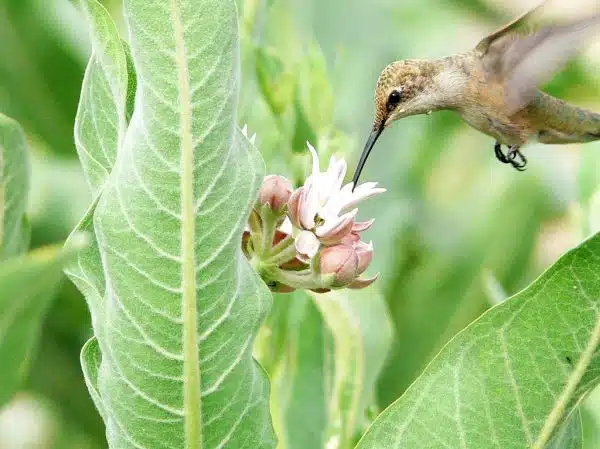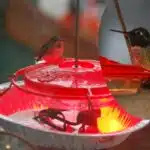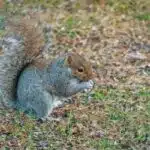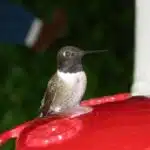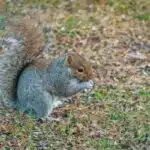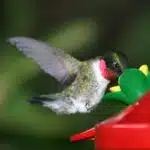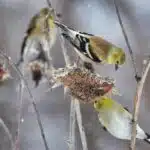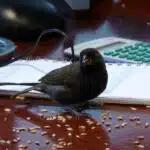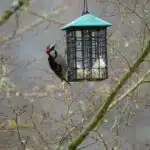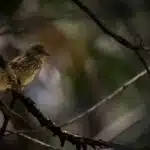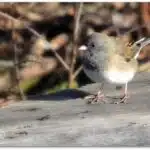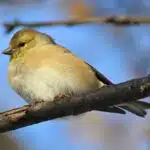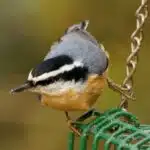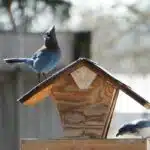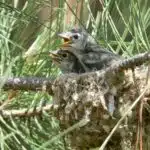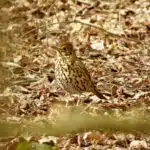Hummingbirds are one of the most fascinating and remarkable bird species in the world. Their unique flying abilities, vibrant colors, and tiny size make them a popular attraction for bird enthusiasts and nature lovers alike. One of the most exciting ways to observe these birds up close is by hand feeding them. However, this activity requires great care and attention to ensure the safety of both the birds and humans involved.
Hand feeding hummingbirds can be an incredible experience, but it must be done correctly to avoid causing harm or distress to these delicate creatures. In this article, we will explore the best practices for safely hand feeding hummingbirds, from selecting proper feeders to establishing safe feeding locations. Whether you are a seasoned bird watcher or just starting out with your love of hummingbirds, following these guidelines will help you create a peaceful environment that fosters both enjoyment and protection for these beautiful birds.
Understanding Hummingbirds’ Dietary Needs
Hummingbirds have a unique dietary requirement that sets them apart from other bird species. They are nectarivorous birds, meaning that they mainly feed on nectar from flowers. This diet is supplemented by small insects and spiders, which provide them with the necessary protein for their growth and development. The sugary nectar of flowers is their primary source of energy, allowing them to maintain their high metabolic rate.
Hummingbirds’ nutritional requirements are highly specific due to their active lifestyle. They require a diet that is high in carbohydrates to fuel their flight, alongside essential amino acids, vitamins, and minerals to support their overall health. Their diet must include a variety of floral sources to ensure they receive all the necessary nutrients required for optimal growth and survival. Hummingbirds have adapted well to this type of diet, showing remarkable endurance during long-distance migrations.
Providing hummingbirds with the right kind of food is critical for their wellbeing. A lack of sufficient nutrition can lead to stunted growth or even death. It’s important to note that not all nectars are suitable for hummingbirds as some may be too diluted or contain harmful additives such as preservatives or artificial colors. Therefore, it’s crucial to provide them with a safe and nutritious alternative in the form of homemade sugar water or commercial hummingbird food mixtures.
To safely hand feed hummingbirds requires knowledge about their dietary needs and feeding preferences. Choosing the right feeder is an essential part of this process as it can affect how much they consume and how often they return for more food.
Choosing The Right Feeder
When choosing a feeder for hummingbirds, it is important to consider the species of bird you are trying to attract. Different hummingbird species have different preferences when it comes to feeding, and some may be more attracted to certain types of feeders than others. For example, some species prefer tube feeders with small ports, while others may prefer saucer or dish feeders. It is important to do some research on the hummingbird species in your area and choose a feeder that will best suit their feeding needs.
Another important factor to consider when choosing a feeder is placement. Hummingbirds are very territorial and can become aggressive towards each other if they feel their feeding space is being threatened. As such, it is important to place your feeder in an area that is not only easily accessible for the birds but also allows them enough space to feed without feeling crowded or threatened by other birds. Additionally, placing your feeder near flowers or plants that hummingbirds are known to be attracted to can help increase the chances of attracting these beautiful birds.
Overall, selecting the right feeder for hummingbirds requires careful consideration of both bird species and placement. By doing some research on the specific hummingbird species in your area and strategically placing your feeder, you can create an environment that will attract these amazing creatures and provide them with a safe place to feed.
Transition: Now that you have selected the right feeder for your hummingbirds, the next step is preparing their nectar.
Preparing The Hummingbird Nectar
- When preparing nectar for hummingbirds, the primary ingredients are sugar and water; the ratio should be 4 parts water to 1 part sugar.
- Boil the water and stir the sugar into it for the proper mixing of the nectar.
- Make sure to allow the nectar to cool before placing it in a hummingbird feeder.
- Fresh nectar should be prepared every 2-3 days to prevent spoilage.
- Any leftover nectar should be stored in the refrigerator and discarded after a few days.
- It is important to clean the feeders regularly to avoid bacteria buildup and keep the nectar fresh.
Choosing The Right Ingredients
As a bird expert, it is important to choose the right ingredients when preparing hummingbird nectar. Homemade nectar is often preferred as it allows for complete control over the ingredients used. However, store bought nectar can also be used as a convenient alternative.
When making homemade nectar, it is crucial to use granulated white sugar and water in a 4:1 ratio. This ensures that the solution is most similar to natural flower nectar and provides the necessary nutrients for the hummingbirds. Avoid using honey or other sweeteners, as they can cause bacteria growth and harm the birds.
If choosing to use store bought nectar, make sure to read the label carefully and avoid any products with added preservatives or artificial colors. These additives can be harmful to hummingbirds and may discourage them from returning to your feeder. It is also important to change out the nectar regularly, as old or spoiled nectar can lead to health issues for the birds. By carefully selecting your ingredients, you can provide a safe and nutritious source of food for these beautiful creatures.
Mixing The Nectar
After selecting the right ingredients for your hummingbird nectar, it is essential to mix them properly. The mixing technique plays a crucial role in ensuring that the nectar is safe and nutritious for the birds. To prepare homemade nectar, use a 4:1 ratio of granulated white sugar to water and mix until the sugar dissolves completely. Do not use hot water or add any additives such as food coloring or fruit juices, as they can be harmful to the hummingbirds.
It is important to note that store-bought nectar may contain additional additives such as preservatives and artificial colors. When using store-bought nectar, follow the instructions on the label carefully and avoid any products with added preservatives or artificial colors. Mix the solution according to the directions provided by the manufacturer and ensure that it is thoroughly dissolved before filling up your feeder.
If you want to provide additional nutrients for your hummingbirds, consider adding some natural nectar additives such as probiotics or vitamins. However, make sure to consult with an avian veterinarian before adding any supplements to their diet. By following proper mixing techniques and choosing safe and nutritious ingredients, you can create a delicious source of food that will attract hummingbirds to your yard season after season.
Storing The Nectar
Proper nectar storage is just as important as preparing the hummingbird nectar itself. Once you have mixed the nectar, it is essential to store it correctly to prevent spoilage and ensure that it remains safe for the birds to consume. It is recommended to make only enough nectar for a few days and store any remaining solution in the refrigerator.
Avoiding mold growth is crucial when storing hummingbird nectar. Mold growth can be harmful to birds and can cause illness or even death. To prevent mold, make sure to clean your feeder regularly and replace any leftover nectar every few days. Store unused nectar in an airtight container that has been thoroughly cleaned and sterilized to eliminate any bacteria or fungi.
It is essential to check your stored nectar regularly for signs of spoilage or mold growth. If you notice any discoloration, cloudiness, or other signs of spoilage, discard the solution immediately and clean your feeder thoroughly before refilling it with fresh nectar. By following proper techniques for storing your hummingbird nectar, you can ensure that your feathered friends have a safe and delicious source of food all season long.
Cleaning And Maintaining Your Feeder
Now that you have prepared the hummingbird nectar and are ready to feed these delightful creatures, it’s important to ensure that you do so safely. One of the ways to safely hand-feed hummingbirds is by selecting an appropriate feeding location. This will not only protect the birds but also ensure that they keep coming back for more.
Cleaning frequency is essential when it comes to maintaining your feeder. You should clean your feeder at least once a week, or more frequently if you notice any mold or other signs of contamination. Hummingbirds are attracted to clean, fresh nectar and will avoid visiting a dirty feeder.
When cleaning your feeder, be sure to use effective cleaning solutions. Avoid using soap or other harsh chemicals that may leave residue or harm the birds. Instead, use a mixture of hot water and vinegar or a mild bleach solution as directed by the manufacturer. Rinse the feeder thoroughly before refilling with fresh nectar.
To effectively hand-feed hummingbirds, it’s important to provide them with a safe and comfortable environment. In the next section, we’ll discuss how to select an appropriate feeding location that will not only attract these lovely birds but also keep them happy and healthy.
Selecting An Appropriate Feeding Location
Choosing the location for feeding hummingbirds is an important consideration to ensure their safety. The first thing to consider is whether the location is sheltered from strong winds and direct sunlight. Hummingbirds are delicate creatures, and they can easily be blown away by strong gusts of wind or become overheated in direct sunlight. Therefore, it’s best to choose a spot that is protected from these elements.
Another factor to consider when selecting a feeding location is the presence of predators. Hummingbirds are small and vulnerable, so it’s essential to provide them with a safe environment in which to feed. Avoid placing feeders near tall trees or shrubs that could provide cover for cats or other predators. It’s also helpful to place the feeder high enough off the ground so that ground-dwelling animals such as raccoons and squirrels cannot reach it.
Ensuring safety for hummingbirds should always be a top priority when choosing a feeding location. One way to do this is by hanging multiple feeders around your property instead of just one central location. This will prevent overcrowding at any one feeder and reduce competition amongst birds. Additionally, choosing locations that are away from high traffic areas like doors or windows can help minimize disturbance during feeding times.
As you prepare to hand-feed hummingbirds, remember that safety should always come first. By selecting an appropriate feeding location and taking steps to ensure their well-being, you can create an environment where these beautiful creatures can thrive and flourish. In the next section, we’ll discuss timing your feeding sessions for optimal results.
Timing Your Feeding Sessions
Hummingbirds should be fed as frequently as possible, ideally once daily. The best time to feed them is in the morning, as this is when they need energy for the day. Feeders should be placed in a sunny location and should be refilled when the sugar water is low. Additionally, feeding frequencies can be adjusted depending on the season and local weather conditions.
Feeding Frequency
Feeding frequency is a crucial factor to consider when hand feeding hummingbirds. These birds have a high metabolism and require frequent meals to maintain their energy levels throughout the day. In general, it is recommended to offer food to hummingbirds every 15-20 minutes during peak feeding times, such as early morning and late afternoon.
Hummingbird metabolism is incredibly fast, and they need a constant supply of nectar to fuel their activities. It is also important to note that they do not store excess food in their bodies for later use, meaning that they must eat frequently to avoid starvation. Therefore, if you choose to hand feed hummingbirds, it is essential to commit to regular feeding sessions throughout the day.
However, it is important not to overfeed these birds, as it can lead to obesity and health issues. The ideal amount of food per feeding session should be no more than half of the bird’s body weight. Additionally, ensure that the feeder is always clean and filled with fresh nectar. With proper attention paid to feeding frequency and portion sizes, you can safely hand feed hummingbirds while providing them with the energy needed for their daily activities.
Feeding Times
Hummingbirds are fascinating creatures that require special attention when it comes to feeding. As experts in the field of ornithology, we understand that timing your feeding sessions is crucial to their survival and overall well-being. One of the most important factors to consider is the best feeding times for these birds.
The best feeding times for hummingbirds are early in the morning and late in the afternoon. During these peak feeding times, they are most active and have a higher demand for energy to fuel their daily activities. It is recommended to offer food every 15-20 minutes during these periods to ensure that they receive a constant supply of nectar.
Feeding frequency is also an essential factor to consider when hand feeding hummingbirds. These birds have a high metabolism and require frequent meals throughout the day. To avoid starvation, it is important to commit to regular feeding sessions at appropriate intervals. By adhering to proper feeding frequency and timing, you can provide hummingbirds with the necessary energy needed for their daily activities while ensuring their overall health and well-being.
Establishing Trust With The Birds
Building Confidence and Respectful Interaction with Hummingbirds
Establishing trust with hummingbirds is the first step towards safe hand feeding. These tiny birds are cautious by nature and will only approach humans if they feel comfortable enough to do so. Therefore, it is essential to build confidence in them by establishing respectful interaction. This means that you must behave in a non-threatening manner and make sure not to frighten or intimidate them.
One way to establish respectful interaction is by observing the birds from a distance for a few days before attempting any kind of interaction. This will allow the birds to become familiar with your presence and help them feel more comfortable around you. You can also try placing a feeder nearby and watching the birds as they feed. This will help build their confidence in you as a source of food.
Another way to establish respectful interaction is by being patient and gentle when interacting with hummingbirds. Remember, these birds are small and delicate, so it is important to handle them carefully. Avoid sudden movements or loud noises that could startle them, and always approach them slowly and calmly.
Building confidence and respectful interaction with hummingbirds takes time, patience, and effort but is crucial for safe hand feeding. By following these guidelines, you can establish trust with these tiny creatures and create an environment where both you and the hummingbirds can enjoy each other’s company.
Transition: Now that we have established how to build confidence with hummingbirds let us move on to approaching them safely for hand feeding.
Approaching Hummingbirds Safely
Establishing trust with hummingbirds is crucial before attempting to hand feed them. It requires patience and consistency in offering nectar from a feeder or flowers, allowing the birds to become familiar with your presence. Once they begin to approach you without fear, it may be time to try hand feeding.
However, safety precautions must be taken when hand feeding hummingbirds. Hummingbirds are small and delicate creatures that can easily become injured if not handled properly. One should never attempt to grab a hummingbird or force them to come near. Instead, wait for them to approach on their own terms.
It’s important to observe hummingbird behavior closely before offering nectar by hand. This allows one to understand their body language and mood, so as not to startle or offend them. If the bird appears agitated or scared, it’s best not to try feeding at that time. With patience and practice, one can establish a strong bond of trust with these remarkable creatures while ensuring their safety during the process.
Offering The Nectar To The Birds
- When offering nectar to hummingbirds, it is important to choose a feeder that is designed specifically for these birds.
- The nectar should be made by mixing a solution of 4 parts water to 1 part sugar, and boiled for a few minutes to help prevent the growth of mold.
- The feeder should be situated in a spot that is protected from the sun and wind, and should be hung from a tree or from a hook.
- It should be placed at least 5 feet from the ground, and should be cleaned with hot water and a mild detergent, and refilled with fresh nectar every few days.
- Hummingbirds are attracted to the red color of the feeder and the sweet smell of the nectar, and will often come to feed from the feeder.
- When offering the nectar, it is important to observe from a distance, as the hummingbirds can be easily startled by loud noises or sudden movements.
Choosing A Feeder
When it comes to hand feeding hummingbirds, choosing the right feeder is crucial. There are different feeder materials that you can choose from, including plastic, glass, and metal. Each has its own advantages and disadvantages. Plastic feeders are lightweight and affordable but may not last as long as other materials. Glass feeders are durable and easy to clean but can be heavy and fragile. Metal feeders are sturdy and long-lasting but may require more maintenance.
Another consideration when choosing a feeder is the placement. Hummingbirds prefer feeders that are in a shaded area with easy access to perches nearby. Avoid placing the feeder in direct sunlight or near a window where it can get too hot. Additionally, make sure the feeder is placed away from potential predators such as cats or squirrels.
Ultimately, the best feeder for hand feeding hummingbirds will depend on your personal preferences and needs. Consider factors such as durability, ease of cleaning, cost, and aesthetics when making your selection. By providing a safe and suitable environment for these birds to feed from, you’ll be able to enjoy their beauty up close while also helping them thrive in their natural habitat without any harm caused by human intervention.
Making The Nectar
As an ornithologist, it is important to know that offering the right nectar to hummingbirds is crucial in their survival. When making the nectar, one must ensure that the sweetness levels are just right. Too much sugar can lead to health problems while too little can cause the birds to look for other sources of food. The recommended ratio for making nectar is a mixture of four parts water and one part granulated sugar.
It is also important to note that natural alternatives should not be used as a substitute for granulated sugar. These alternatives such as honey, agave, and molasses contain high levels of iron which can be toxic for hummingbirds. Additionally, artificial sweeteners should also not be used as they do not have the necessary calories that hummingbirds need to survive especially during migration season.
When making the nectar, it is best to use filtered or boiled water to prevent any bacteria from growing in the feeder. The nectar must also be changed every few days, especially during warm weather, to avoid fermentation which can be harmful to the birds. By following these guidelines when making and maintaining the nectar, you offer a safe and suitable environment for these birds while helping them thrive in their natural habitat without any harm caused by human intervention.
Feeding The Birds
As an ornithologist, providing the right nectar to hummingbirds is just one aspect of caring for these feathered friends. Feeding the birds requires more than just filling up their feeders with nectar and hoping for the best. One must consider feeding frequency and alternative food sources as well.
Feeding frequency is a crucial factor in keeping hummingbirds healthy. During migration season, these birds need to consume twice their body weight in nectar every day to keep up their energy levels. Therefore, it’s essential to check on your feeder regularly and refill it when necessary. Additionally, if you notice mold or fermentation in the nectar, change it immediately to prevent harm to the birds.
While nectar is the primary food source for hummingbirds, offering alternative food sources can help supplement their diet. For example, planting native flowers that produce nectar-rich blooms will provide additional nourishment for these birds. Additionally, fruits such as banana slices or small amounts of grape jelly can also be offered in moderation as a treat. By offering a varied diet of nectar and other foods, you are providing essential nutrients that will help keep hummingbirds healthy and thriving in their natural habitat.
Monitoring The Birds’ Behavior
Observing hummingbirds up close can be an exhilarating experience, especially when hand-feeding them. However, it is important to remember that these tiny birds are still wild animals and should be treated with respect. Reading their body language is crucial in ensuring a safe and enjoyable interaction. Hummingbirds communicate through their movements, chirps, and postures. By paying attention to their behavior, you can determine whether they are comfortable with your presence or feel threatened.
Setting boundaries is also important when hand-feeding hummingbirds. It is essential not to invade their personal space and avoid getting too close to their nests or young ones. You can place a feeder or flower near your feeding station to attract them away from sensitive areas. Additionally, it is recommended not to feed them for more than 10 minutes at a time as prolonged exposure may lead to overdependence on humans for food.
By monitoring the birds’ behavior and setting boundaries, you can ensure a safe and rewarding interaction with these fascinating creatures. However, it is essential to avoid overfeeding as this can result in negative consequences for both the bird’s health and natural behavior patterns. In the next section, we will discuss how to avoid overfeeding hummingbirds while still providing them with adequate nutrition.
Avoiding Overfeeding
Hummingbirds have a high metabolism which means they need to eat frequently. However, it is important to avoid overfeeding them as it can lead to health problems. Signs of fullness include the bird becoming less active or flying away after feeding. It is important to monitor the amount of food given and not exceed their dietary needs.
It is also important to vary the types of food offered to hummingbirds. A diet consisting solely of sugar water can cause malnutrition and health problems such as liver damage and weakened immune systems. Offering natural nectar from flowers or commercially available nectar mixes can supplement their diet with essential nutrients and vitamins. Additionally, providing a variety of feeders with different shapes and sizes can attract different species of hummingbirds.
In summary, avoiding overfeeding and providing a varied diet are crucial for maintaining the health of hummingbirds. Paying attention to signs of fullness and monitoring the amount of food given can prevent overeating. Offering natural sources of nectar and using different feeders can provide necessary nutrients and attract diverse species. Next, we will discuss how to handle injured or sick hummingbirds in a safe manner.
Handling Injured Or Sick Hummingbirds
Hummingbirds are delicate creatures that require proper care and attention. Unfortunately, they can sometimes become injured or sick due to various reasons, such as collisions with windows or predation by cats. Injured or sick hummingbirds should be handled with care and taken to a rehabilitation center.
Rehabilitation centers specialize in the care and treatment of injured or sick wildlife. They have the necessary expertise and facilities to provide medical attention to hummingbirds in need. It is important not to attempt any home remedies or treatments as these may do more harm than good. Instead, contact your local wildlife rehabilitation center for assistance.
In case of an emergency, it is crucial to have the contact information of your nearest wildlife rehabilitation center readily available. Keep their phone number and address on hand so you can quickly transport a sick or injured hummingbird to their facility. Remember that time is of the essence when dealing with injured birds, so act quickly and responsibly. By taking prompt action, you can help ensure that these beautiful birds receive the care they need to recover and thrive once again.
Transition: Now that we understand how important it is to seek professional help when dealing with sick or injured hummingbirds, let us turn our attention towards educating others about safe hand feeding practices.
Educating Others About Safe Hand Feeding Practices
Hand feeding hummingbirds can provide many benefits, including increased knowledge of the species and improved bird-human relationships. However, it is important to ensure that hand feeding is done safely and responsibly. Proper techniques should involve maintaining a safe distance from the birds and providing food that is appropriate for their dietary needs. Additionally, hand feeding should be done in moderation and be done with minimal disruption to the birds’ natural feeding habits.
Benefits Of Hand Feeding
Hand feeding hummingbirds is a unique experience that many people find to be both exciting and rewarding. There are several benefits of hand feeding hummingbirds, including the ability to observe their behavior up close and personal, as well as the opportunity to establish a deeper connection with these beautiful creatures. Additionally, hand feeding can help to supplement their diet during times of low nectar availability.
To safely hand feed hummingbirds, it is important to use proper technique. One effective technique involves holding a small feeder filled with sugar water in your hand and remaining still until the bird approaches. It is important to avoid sudden movements or loud noises that could startle the bird. Additionally, it is crucial to use only plain white granulated sugar mixed with water for the sugar water solution, as other sweeteners such as honey or brown sugar can be harmful to hummingbirds.
Overall, educating others about safe hand feeding practices can not only enhance their appreciation for these tiny birds but also contribute to their conservation efforts. By providing a supplemental food source during times of need, we can help ensure that hummingbirds continue to thrive in our gardens and natural spaces for years to come.
Safe Hand Feeding Techniques
Hand feeding hummingbirds can be an exhilarating experience for many bird enthusiasts. However, it is crucial to understand the hand feeding risks involved and practice safe techniques when attempting to feed these tiny creatures. Safe hand feeding techniques not only ensure the safety of both the hummingbird and the feeder but also contribute to their conservation efforts.
Observing hummingbird body language is one of the essential aspects of safe hand feeding techniques. Hummingbirds communicate through body language, and understanding their signals can prevent them from feeling threatened or stressed during the feeding process. Sudden movements or loud noises can startle a bird, causing them to fly away or become aggressive. Therefore, it is important to remain still and avoid any sudden gestures during the hand feeding process.
Another critical aspect of safe hand feeding techniques is using plain white granulated sugar mixed with water for the sugar water solution. Other sweeteners like honey or brown sugar can harm hummingbirds’ digestive systems, leading to health problems that could eventually prove fatal. Educating others about safe hand feeding practices ensures that they use proper techniques while providing supplemental food sources during times of need without endangering these beautiful creatures.
In summary, practicing safe hand feeding techniques involves observing hummingbird body language and using plain white granulated sugar mixed with water for the sugar water solution. Educating others about these practices contributes significantly to their conservation efforts by ensuring their safety while providing supplemental food sources in times of need. By following these guidelines, we can enjoy a closer connection with these tiny birds while promoting their well-being in our gardens and natural spaces.
Being Mindful Of Local Wildlife Laws And Regulations
As we continue to educate others on safe hand feeding practices for hummingbirds, it is important to also be mindful of local wildlife laws and regulations. This ensures that our actions do not harm the birds or violate any legal requirements. Researching regulations is essential before engaging in any hand feeding activities.
In addition to legal requirements, ethical considerations must also be taken into account when hand feeding hummingbirds. It is crucial to ensure that our actions do not interfere with the natural behavior of these birds or disrupt their migration patterns. We must also take steps to prevent attracting other animals or potentially harmful insects that could impact the health of the hummingbirds.
To enjoy the beauty of hummingbirds responsibly, here are three key things you can do:
- Use clean feeders and avoid overcrowding them
- Avoid using artificial sweeteners or food coloring in nectar mixtures
- Limit hand feeding activities and only offer small amounts of nectar at a time
By following these guidelines and being mindful of regulations and ethical considerations, we can safely and responsibly enjoy the wonder of hummingbirds up close. Remember to always prioritize the well-being and natural behavior of these beautiful creatures when engaging in any hand feeding activities.
Enjoying The Beauty Of Hummingbirds Responsibly
Hummingbirds are fascinating creatures that can bring joy and beauty to our lives. However, it is important to enjoy them responsibly. One way to do this is by refraining from hand feeding them. While it may seem harmless or even tempting, hand feeding hummingbirds can have negative consequences for both the birds and humans involved.
Firstly, hand feeding can cause hummingbirds to become too dependent on humans for food. This can disrupt their natural behavior and migration patterns, as well as make them vulnerable to predators. Additionally, the sugar water commonly used for hand feeding may lack essential nutrients that hummingbirds need in their diet, leading to health problems over time.
Instead of hand feeding, there are other ways to safely observe and appreciate these remarkable birds. Photographing hummingbirds with a camera or binoculars can allow you to capture their unique beauty without disturbing their natural habits or endangering their health. Additionally, learning how to identify different species of hummingbirds can add another layer of enjoyment and understanding when observing them in the wild.
In conclusion, while it may be tempting to feed hummingbirds by hand, doing so should be avoided in order to protect both the birds and ourselves. By finding alternative ways to observe these amazing creatures such as photographing or identifying different species we can safely enjoy their beauty without causing harm.
Conclusion
Hummingbirds are fascinating creatures and feeding them can be a delightful experience. However, it is important to do so safely and responsibly. Understanding their dietary needs and choosing the right feeder are crucial steps in ensuring their well-being. Preparing nectar with the correct ratio of sugar to water and maintaining a clean feeding station are also essential.
Selecting an appropriate location for the feeder is important as well, as it should be easily accessible for hummingbirds but not pose a threat to other wildlife. Injured or sick hummingbirds should never be handled without proper knowledge and training, and education about safe hand feeding practices should be shared with others.
In conclusion, feeding hummingbirds can be a rewarding activity when done responsibly. As the saying goes, “with great power comes great responsibility,” and we must remember that our actions have consequences beyond just our own enjoyment. By following safe practices and educating ourselves and others, we can continue to enjoy these beautiful birds while respecting their natural habitat.
Image Credits
- “Hummingbird Feeding” by Bandelier National Monument (featured)

